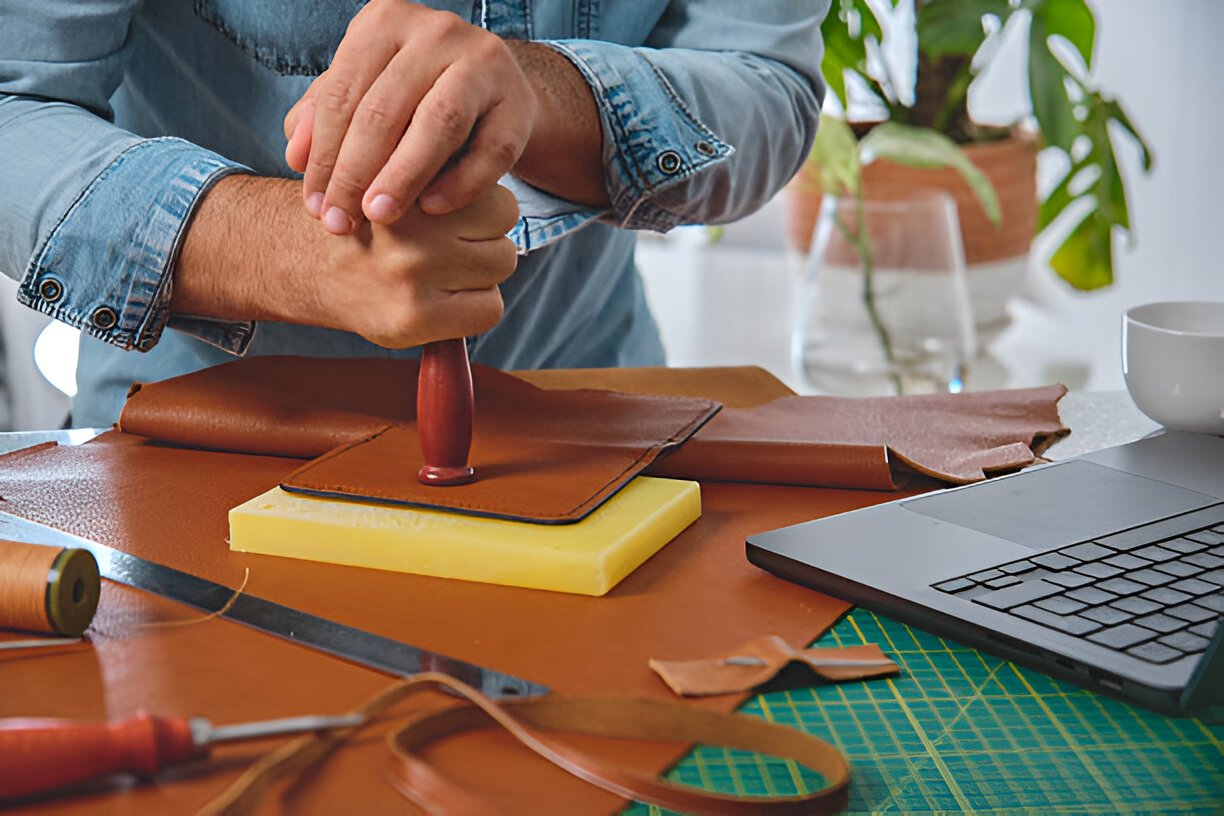Leather making has become one of the most popular creative activities in Singapore. From beginners to experienced crafters, many people are turning to leather workshops to learn how to design and create their own handmade items. These workshops offer a chance to work with high-quality materials, learn age-old techniques, and experience the joy of turning simple leather into practical or decorative pieces.
Attending a leather making workshop in Singapore provides not just skills but also a unique appreciation for craftsmanship. Let’s explore the skills you can learn, the tools used, and the overall experience of joining such a workshop.
Skills You Learn in a Leather Making Workshop
Understanding Leather Types
The first skill beginners acquire is identifying different kinds of leather. Each type, from vegetable-tanned to chrome-tanned leather, offers unique qualities. Workshops in Singapore introduce participants to textures, thickness levels, and finishes. Knowing which leather works best for wallets, belts, or bags is the foundation of leather craft.
Basic Crafting Techniques
Cutting, punching, stitching, and burnishing are the core techniques taught in most sessions. Trainers guide participants on how to cut clean edges, punch even holes, and sew using traditional saddle stitching. This step-by-step approach ensures even complete beginners can follow along and produce neat results.
Finishing Touches
Polishing and edge treatment are important in making leather items durable and attractive. Learners practice burnishing edges, applying natural wax, and adding personal details such as initials. Finishing techniques often transform a simple leather piece into a professional-looking product.
Tools Commonly Used in Leather Workshops
Cutting Tools
Leather making requires sharp and precise cutting tools. Utility knives, rotary cutters, and shears are commonly used. Participants learn how to handle these tools safely and cut accurately without wasting material.
Stitching Tools
Workshops introduce needles, awls, and stitching chisels. Saddle stitching, a technique that uses two needles and a single thread, is the most taught method. It produces durable seams that can last for years.
Punching and Marking Tools
Leather needs neat holes for stitching and decorations. Hole punches, pricking irons, and marking wheels help in this process. Learners also use rulers and templates to ensure patterns are consistent.
Finishing Tools
Burnishers, edge bevelers, and mallets are essential for refining leather. Participants also work with waxes and oils to give a polished finish. These tools ensure each project looks professional.
Types of Projects You Can Create
Small Accessories
Workshops usually start with smaller projects. Items like keychains, cardholders, and coin pouches allow beginners to practice techniques without feeling overwhelmed. These projects are easy to complete in a short session.
Everyday Items
Once participants gain confidence, they often move on to wallets, belts, or notebook covers. These items require more stitching and attention to detail but remain manageable for intermediate learners.
Advanced Creations
For those who continue attending workshops, advanced projects may include handbags, travel organizers, or custom-designed cases. These projects combine multiple techniques and provide a deep sense of achievement.
The Experience of a Workshop in Singapore
Hands-On Learning
Unlike online tutorials, a physical workshop provides direct guidance. Instructors demonstrate each step, and learners get to practice immediately. This hands-on style ensures mistakes can be corrected quickly.
Creative Expression
Leather making allows participants to explore creativity. Many workshops encourage adding initials, custom stitching colors, or unique patterns. This personal touch makes each piece different.
Relaxing Environment
Workshops are often set up in calm, inspiring spaces. Many participants describe the process as therapeutic. The repetitive stitching, soft texture of leather, and focus on details create a relaxing experience.
Community and Sharing
Joining a leather making workshop in Singapore also connects people. Participants often meet others who share the same interest in crafts. This sense of community adds to the overall experience and motivates learners to continue practicing.
Why Leather Making Appeals to People in Singapore
Balancing Work and Creativity
Many people in Singapore have busy, fast-paced jobs. Attending a craft workshop provides a refreshing break from digital screens. It allows participants to use their hands, slow down, and enjoy creating something tangible.
Appreciation for Handmade Products
There is a growing appreciation for handmade and sustainable products in Singapore. Leather craft workshops let people understand how much effort goes into making a single item. This builds respect for artisans and encourages mindful consumption.
A Practical Skill
Unlike many other hobbies, leather crafting results in useful products. Learners walk away with wallets, belts, or key holders they can use daily. This practicality makes the skill more rewarding.
Tips Before Joining a Workshop
Choose the Right Level
Beginners should start with introductory sessions. These are usually two to three hours long and cover basic skills. Intermediate learners can join multi-session courses to create larger projects.
Wear Comfortable Clothing
Leather work involves sitting for long periods and using tools. Comfortable clothing makes it easier to move and stay focused.
Be Patient
Leather making is a skill that improves with practice. Mistakes are part of the learning journey. Workshops in Singapore emphasize patience and consistency.
Ask Questions
Instructors are there to help. Participants should feel free to ask questions about techniques, tools, or material choices. This interaction enhances the learning experience.
The Lasting Value of Learning Leather Craft
Leather making workshops in Singapore are more than just classes. They are opportunities to gain practical skills, express creativity, and appreciate the beauty of handmade products. The knowledge gained can even lead to a long-term hobby or small business for some.
By joining a workshop, participants carry home not just a finished product but also a deeper understanding of craftsmanship. The blend of tradition, creativity, and practicality makes leather crafting a fulfilling experience.
